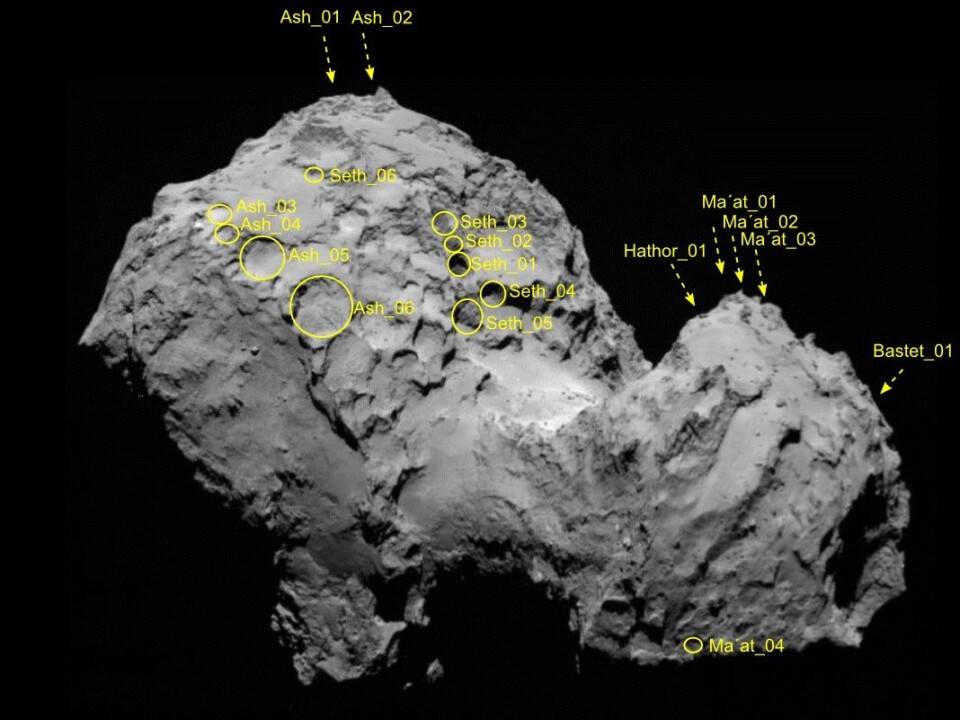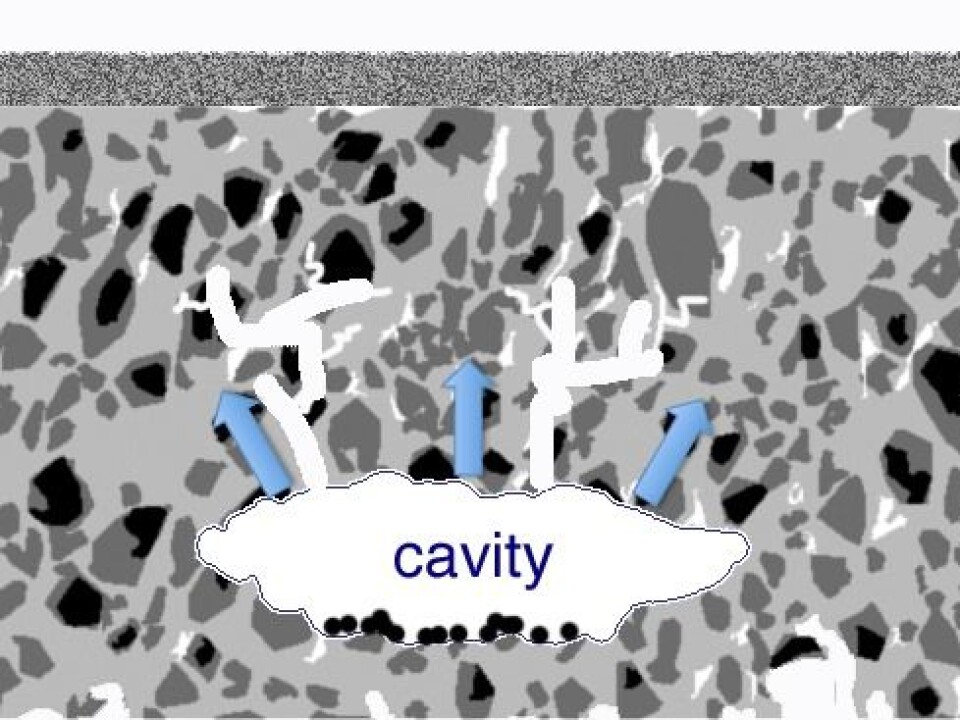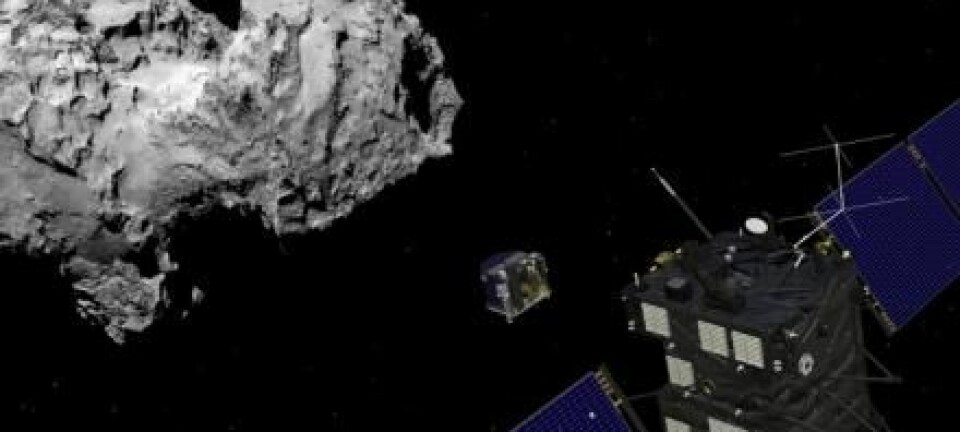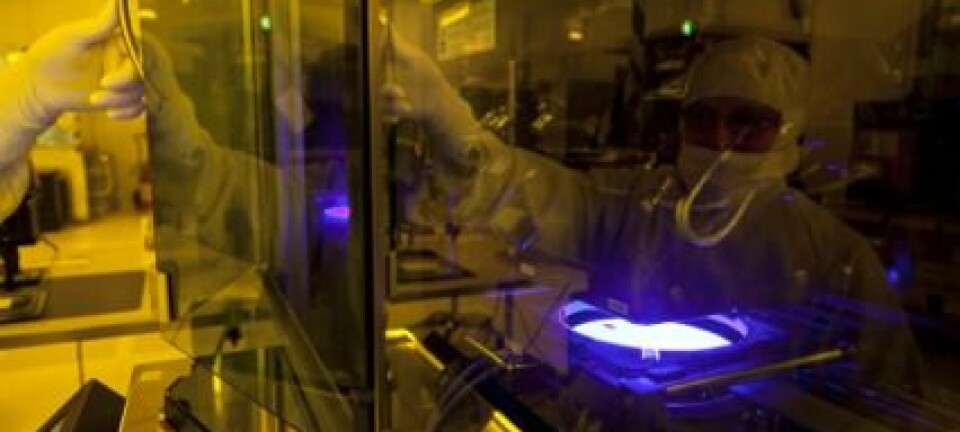
News from Rosetta: Mysterious holes help unlock secrets of the universe
Mysterious holes on the surface of comet 67P are photographed in unprecedented detail, helping to unlock the history of the solar system.
In January 2015, the initial results from the eagerly awaited European Space Agency’s Rosetta Mission were published. Comet 67P/Churyumov-Gerasimenko started to give up its secrets and scientists pieced together a detailed picture of the comet.
Photographs reveal pits across the comet’s surface -- some of them several hundred metres deep and just as wide -- that appear to be emitting small streams of dust into space.
This intrigued the Rosetta scientists who debated what caused these pits and the dust streams, and what they could tell us about the formation and evolution of the comet itself.
New research published this week in the journal Nature, documents these features at a level of detail not possible before the Rosetta mission. It shows that these mysterious holes may have formed when the comet surface collapsed into a cavity below and this could tell the scientists about the nature of the material that makes up the comet.

The results provide another piece to puzzle as to how the comet formed and may help the Rosetta team to tell us more about the origins of our own solar system.
The best pictures of a comet taken so far
When the Philae lander completed its historic landing on the surface of comet 67P earlier this year, it was helped in no small part by a camera system on board the Rosetta orbiter, called OSIRIS.
The OSIRIS imaging system consists of two cameras -- A wide-angle camera takes the wide shots of this now infamous comet, whilst a narrow angle camera takes fine resolution images of the details of the comet surface. Previous space cameras have photographed comets at 10 metres per pixel, but OSIRIS takes pictures at 10 centimetres per pixel, allowing the scientists to view the comet with an unprecedented level of detail.
Emeritus professor, Hans Rickman from the Department of Physics and Astronomy at Uppsala University in Sweden, is a lead scientist of the OSIRIS team.

“The Rosetta mission tries to answer a very important question. Is this comet an old eyewitness from the time of the very formation of the solar system, when the first sizeable solid objects were formed? This is what we suspect from all the information we have gathered from all other comets,” says Rickman.
“But this comet could be telling us something different. This is what we now have to find out,” he says.
Closer inspection yield surprising results
OSIRIS has been taking pictures of the surface of the comet every day for nearly a year, and the research team have been analysing these photos to study the features on the comet surface.
“When Rosetta arrived at the comet last summer, we saw that there were a few holes on the comet surface, some of them were very large.” says Jean-Baptiste Vincent, lead author on the new study and a planetary scientists at the Max-Planck-Institute for Solar System Research in Germany.
“At first, we didn’t pay much attention to them, as we were really focused on mapping the entire surface of the comet and to identify all the features that we could see. But when we looked at the pits more closely, we saw that these holes were emitting dust in small stream, like a tiny jet,” says Vincent.
On closer inspection, these dust jets appeared to coming out of the walls of the pits and so Vincent and his team decided to investigate them further.
What caused these large pits?
One theory is that the pits are created over many years by these jets, as they spray dust into space. This happens by a process called sublimation -- where ice is heated so quickly that it transforms straight into a gas. As the gas escapes into space, it takes dust from the comet surface with it.
But by analysing the new OSIRIS images, the scientists were able to estimate the amount of material being ejected, and saw that the jets simply did not emit enough dust to explain how these pits formed.
They began to examine the possibility that the pits had actually formed much more quickly, by a process that we see here on earth.
If you have ever visited a cave, then you may have seen similar pits -- earth scientists call them sinkholes. They form when a cave collapses in on itself.
A cave is essentially a cavity in the ground. When the cavity becomes large enough, the ceiling becomes too thin, and can no longer support itself. At this point, it collapses, creating a sinkhole. Some regions of the earth’s surface are littered with such holes.
On a comet, the process may be a little different but the principle is the same, and could explain these pit features as well as the role played by the strange dust jets.
“When the pit collapses and forms these holes you expose the sides of the cavity to sunlight, which quickly melts the ice and allows gas and dust to escape in the fine jets that we see in our images,” says Vincent.
But how did the cavities form in the first place?
Whilst the sinkhole analogy explains how the pit got its shape, and how it may have formed quite quickly, the scientists still need to explain where the cavity came from in the first place.
According to Vincent, there are two main possible explanations, and they may take us back to the time the comet formed and even the beginning of our solar system.
“They could be very old features, primordial in fact, dating back to when the comet first formed. If the comet formed back then by space material colliding and aggregating together, then there could be voids in between these blocks of material. Later on, these could collapse and create the pits that we see,” he says.
“Another theory is that the comet is made of a very porous material, with lots of tiny cavities that contain ice. When the ice sublimates directly into gas, this escapes and forms a larger cavity, deep inside the comet. Over time, as on earth, the ceiling of the cavity becomes so thin that it suddenly collapses and creates the pits that mark the surface of comet 67P,” says Vincent.
Can these sinkholes tell us how Comets form?
Right now, Vincent and his team cannot say which of these theories is correct, but they expect that other data collected by Rosetta will let them find out soon.
“Now that Philae is awake, other members of the Rosetta team can scan the comet to see what the structure is like below the surface. If we see large voids then this is evidence that they are old and date back to the early formation of the comet.”
“But if there are no large voids then it is likely that they are much younger features, formed by sublimation of ice from the tiny cavities,” he says.
Whilst Vincent and his team continue to photograph the comet and collect more data, other scientists can start to use their observations to see how they support or refute existing theories as to how comets formed.
The ground-breaking research from the Rosetta Mission continues.











